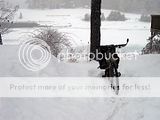Hi all,
Say I have found I have less oooomph for my 31cc 4 cycle.
With air in the 40 /50s anyone else see this?
I had thought cooler air being more dense would have given me more.
Type of fuel I am using marine grade gas, no alcohol.
Anyone using hybred? effects on rubber?
Be well and remember NO ONE can see you on a bike!
Say I have found I have less oooomph for my 31cc 4 cycle.
With air in the 40 /50s anyone else see this?
I had thought cooler air being more dense would have given me more.
Type of fuel I am using marine grade gas, no alcohol.
Anyone using hybred? effects on rubber?
Be well and remember NO ONE can see you on a bike!








